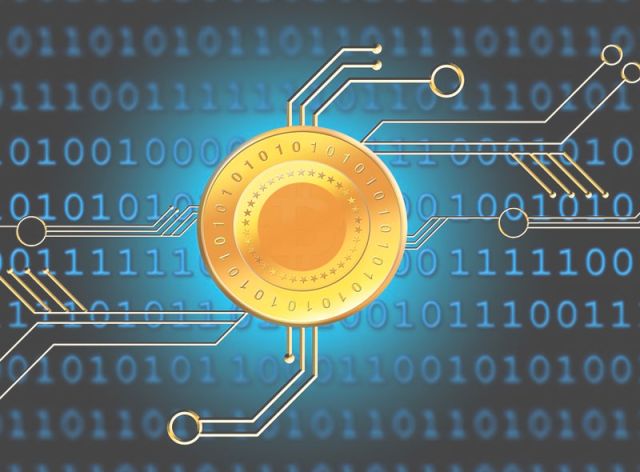Wolski & Krintz – Improving the Energy Efficiency of Cryptocurrencies
Two computer science professors, Chandra Krintz and Rich Wolski, receive an Investment Group of Santa Barbara (IGSB) grant to make cryptocurrencies more energy efficient

Excerpt from the COE News – "Investments in Innovation and Efficiency" article
Four potential high-impact projects intended to solve critical energy-efficiency challenges have been awarded a total of $300,000 in seed funding from UC Santa Barbara’s Institute for Energy Efficiency (IEE), the College of Engineering’s interdisciplinary research center dedicated to cutting-edge science and technologies that support an energy-efficient and sustainable future. Each of the projects aligns with at least one of the institute’s key interdisciplinary thrusts: smart societal infrastructure, computing and communications, and the food-energy-water nexus.
Two of the projects were the inaugural recipients of $100,000 grants from The Investment Group of Santa Barbara (IGSB), though a program launched this year to support high-impact research of energy-efficient software. The funding provides a significant advance or reduction in risk of work that is likely to lead to commercialization and a positive impact on society. Two projects received $50,000 apiece through the IEE Research Seed Grant Program. Seed funding is intended to help researchers produce preliminary results that can be used to apply for major external funding to expand their projects.
The four projects are aimed at developing novel technologies to improve the efficiency of mobile devices, batteries, cryptocurrency, and management of the power grid. A summary about the Chandra Krintz and Rich Wolski project is included below.
Improving the Energy Efficiency of Cryptocurrencies
Cryptocurrency, or crypto, is a digital-payment system that does not rely on banks to verify transactions. Cryptocurrency received its name because it uses encryption, or advanced coding, to verify transactions and provide security and safety. Units of crypto are created through a process called mining, which involves using high-performance computers and an agreed upon “mining” algorithm to solve complicated mathematical problems that generate coins, a token of encrypted data that denotes a unit of value. Holders of crypto do not own anything tangible, but their ownership is recorded on a tamper-proof and unforgeable public ledger, called a blockchain, which is available to all market participants. As a result, it is possible for anyone to verify that the seller or buyer indeed owns the coin that is being purchased or presented for payment. The current market capitalization of all cryptocurrencies in circulation is roughly $920 billion, similar to the gross domestic product of Turkey, the seventeenth largest economy in the world.
A major problem with cryptocurrencies is that they are extremely inefficient and significant contributors to global air pollution. As the market has grown over time, the problems that crypto “miners” had to solve in order to mint, or earn, new coins became increasingly complex, requiring more computing power, which used more energy. Because mining is a highly competitive business, firms operate thousands of high-tech computers around the clock. Bitcoin, the world’s largest cryptocurrency, currently consumes an estimated 156 terawatt-hours of electricity annually, more than the entire country of Argentina, which is home to 45 million people. Producing that much energy emits 67 megatons of carbon dioxide annually, comparable to the emissions of New Zealand.
Krintz and Wolski, have received a $100,000 from IGSB software grant to make cryptocurrencies more energy efficient.
“We are thrilled and grateful to receive this software impact grant to study the next generation of energy-efficient cryptocurrencies and smart contracts,” said Krintz, referencing smart contracts, which are pieces of code that perform computations based on the inputs and outputs of transactions. “This is a very important area of energy efficiency, and our group is excited and eager to contribute new advances that enhance the sustainability of the next generation of computing systems.”
As part of their project, titled “Coloring Cryptcoins Green: Making Cryptocurrencies More Energy Efficient,” the two will develop a methodology by which market participants in a cryptocurrency market are incentivized to use renewable energy for their electricity expenditure while mining digital coins.
“We plan to “color” each coin minted in proportion to the renewable energy its mining used,” explained Wolski. “Transactions that use coins minted with renewable energy will be “colored green” in a tamperproof way — allowing people to choose coins and participate in transactions based on their greenness.”
Krintz and Wolski plan to access renewable energy data from Independent System Operations (ISOs) to tag each coin with an estimate of the renewable energy that was available from the grid at the time the coin was minted in the region where the verifier, which is a tool used to audit and verify each transaction, was located. In their approach, the instantaneous amount of renewable energy available in the region where the verifier is located would serve as a form of “carbon license,” incentivizing verifiers to participate when renewable energy is present. They aim to design a transaction that correctly records the relationship between a verifier and an ISO so that the available energy is correctly reflected when the coin is minted, which would make it possible to determine the fraction of total renewable energy that each minting consumed.
“Our work will reduce the energy consumption of cryptocurrency by incentivizing the use of green cryptocoins,” said Krintz, adding that the Environmental, Social, and Governance (ESG)-relevance of their work could make commercialization possible.
Their research could also spur the creation of “green contracts,” in which a smart contract can be executed only by using cryptocoins that are sufficiently green, further dropping the energy consumption of computing.
COE News – "Investments in Innovation and Efficiency" article